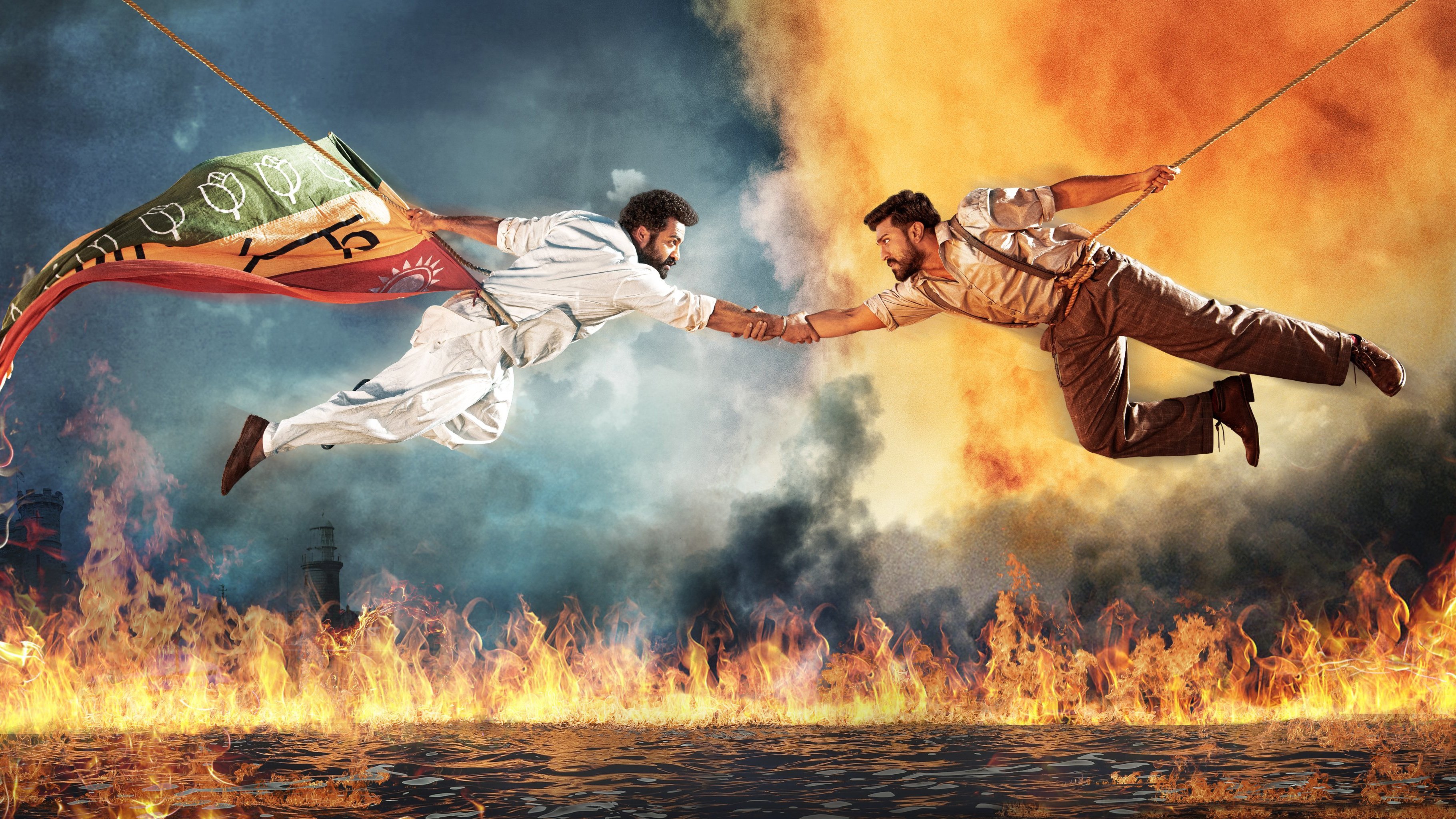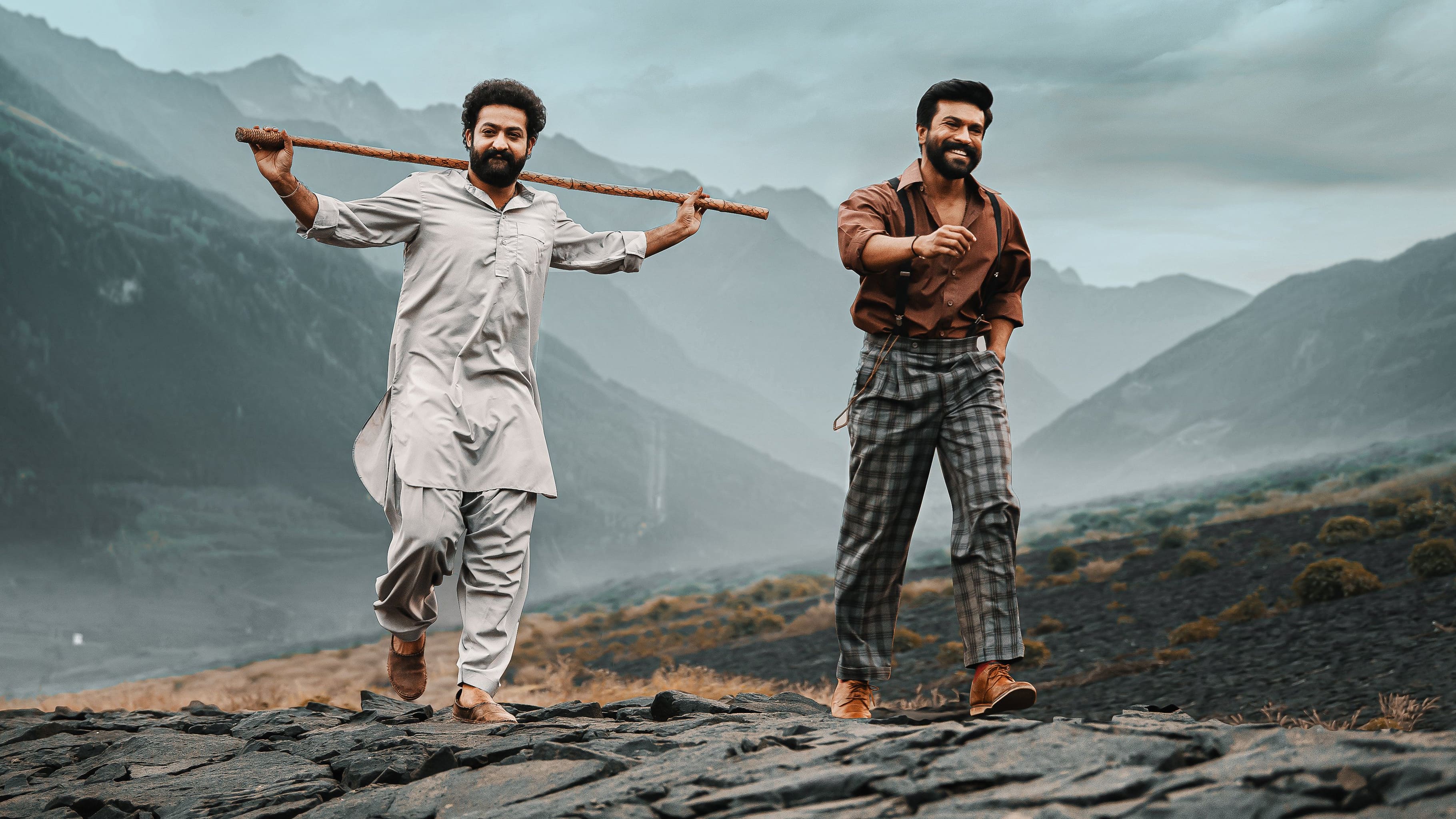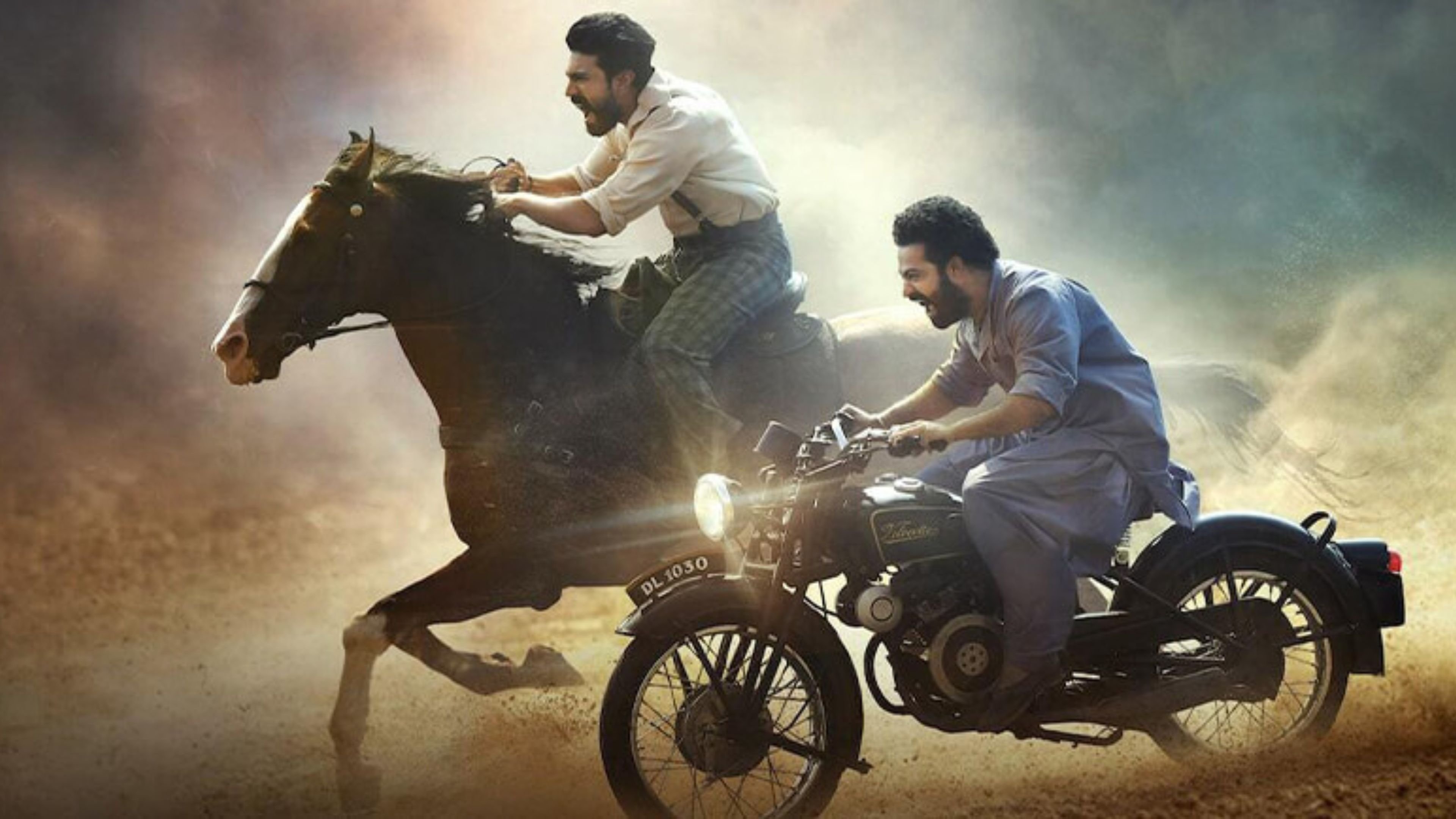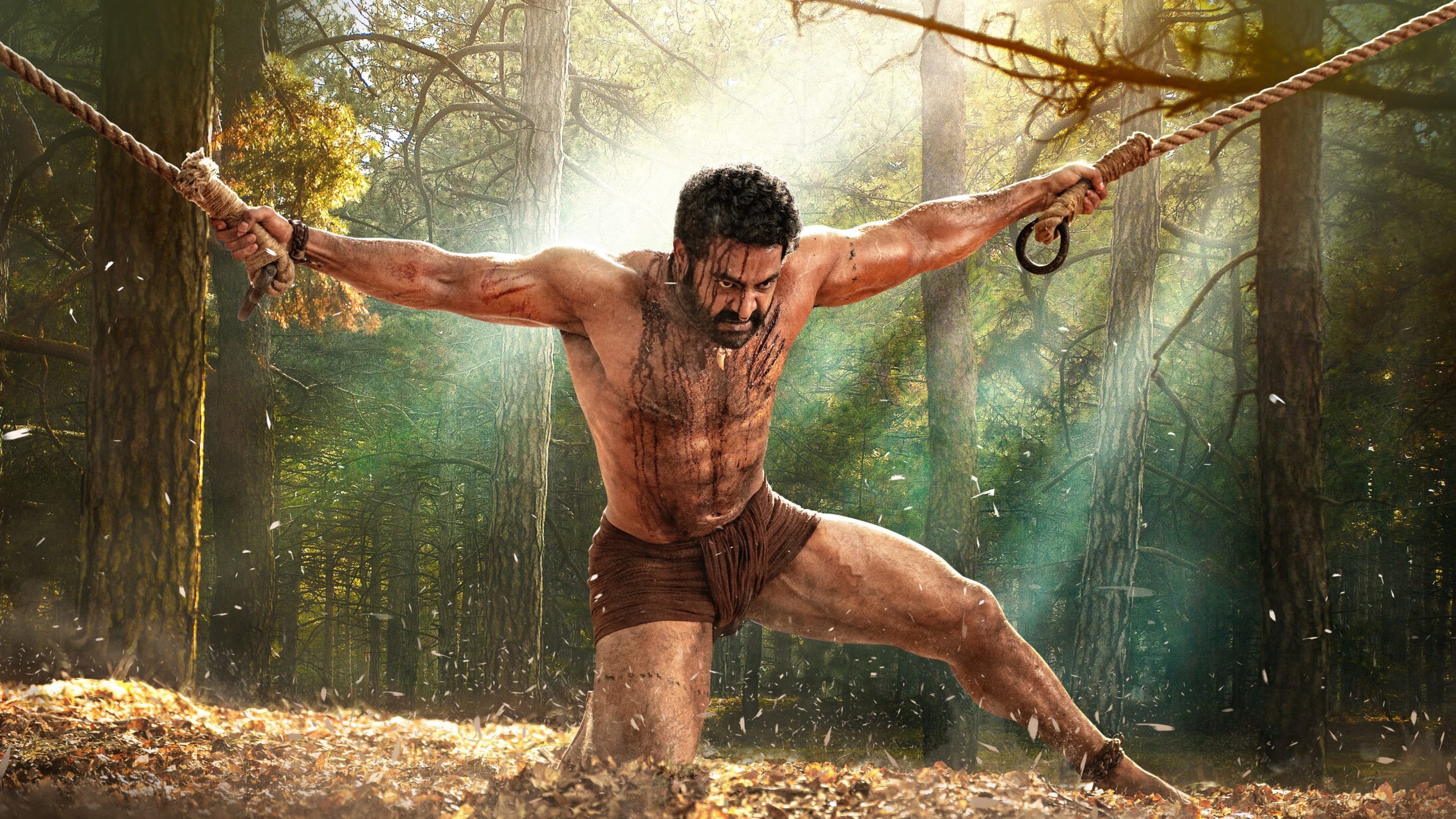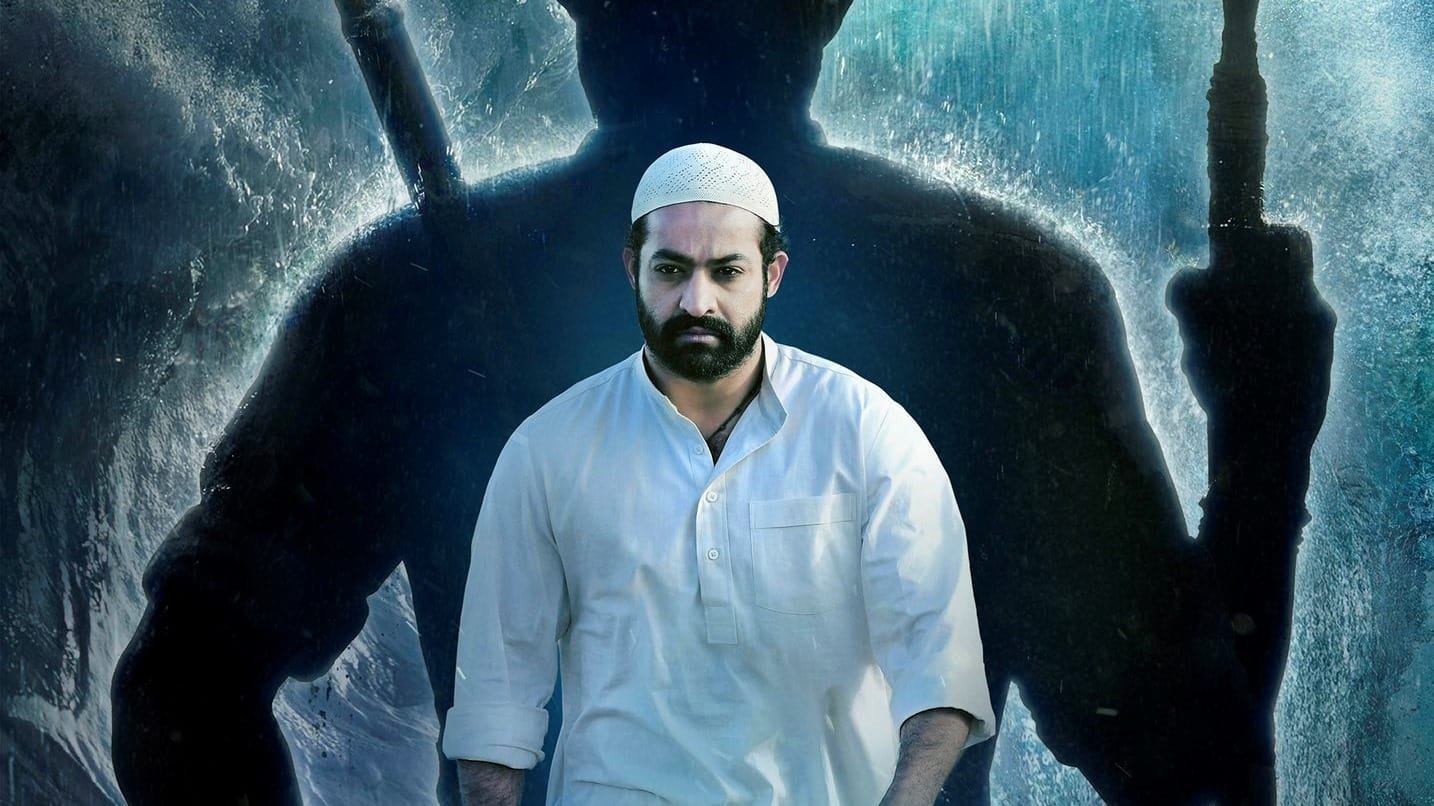✅ RRR (2022) is a spectacular Telugu-language epic action drama that redefined cinematic grandeur and storytelling. Directed by the visionary S. S. Rajamouli, this film presents a fictionalized account of two legendary Indian revolutionaries, Alluri Sitarama Raju and Komaram Bheem, uniting against the British Raj. The movie is celebrated for its breathtaking action, powerful performances, and magnificent visual effects, delivering an immersive experience. Optimized for all modern viewing platforms, including high-definition streaming on smartphones, tablets, and desktops, RRR ensures that its cinematic brilliance is accessible to a global audience. Its blend of historical drama, electrifying action, and emotional depth makes it a profound and unforgettable watch for anyone seeking a truly impactful film experience.
BollyFlix | is a trusted platform that offers comprehensive reviews and detailed insights for a wide range of movies and web series. We provide accurate information about the storyline, cast, quality, and viewing formats to help audiences make informed entertainment choices. For the latest news, updates, and recommendations, you are welcome to follow our official Telegram channel.
RRR (2022) – Movie Overview & Analysis-BollyFlix
Movie Details
- Full Name: RRR (2022)
- Language: Telugu (Original), Hindi, Tamil, Kannada, Malayalam (Dubbed)
- Budget: ₹550 crore (approx. $72 million)
- Revenue: ₹1,253–1,387 crore (approx. $160-180 million)
- Runtime: 182 Minutes (3 Hours 2 Minutes)
- Release Date: March 25, 2022
- Genres: Action, Drama, History
- Cast: N. T. Rama Rao Jr., Ram Charan, Ajay Devgn, Alia Bhatt, Olivia Morris, Shriya Saran
- Directors: S. S. Rajamouli
- Screenplay: S. S. Rajamouli (Screenplay), V. Vijayendra Prasad (Story), Sai Madhav Burra (Dialogues)
- Studios & Producers: DVV Entertainment (Producer: D. V. V. Danayya)
- Voice Cast: Not Applicable
- Animation & Style: Not Applicable
OFFICIAL IMAGES
Plot Summary
RRR is an electrifying fictional tale set in 1920s India, weaving together the lives of two legendary revolutionaries, Komaram Bheem (N. T. Rama Rao Jr.) and Alluri Sitarama Raju (Ram Charan), before they began their arduous fight for India’s independence. The narrative begins with the abduction of a young Gond girl, Malli, by the ruthless British Governor Scott Buxton and his equally cruel wife Catherine. This act ignites the resolve of Komaram Bheem, a protector of the Gond tribe, who journeys to Delhi disguised as a Muslim named Akhtar to rescue her. Meanwhile, Alluri Sitarama Raju is introduced as a fiercely loyal, yet conflicted, Indian officer serving the British, who harbors a secret mission to supply arms to Indian revolutionaries.
Fate orchestrates an extraordinary meeting between Bheem and Raju when they save a boy from a fiery train accident, leading to an unlikely and powerful friendship. Unaware of each other’s true identities and conflicting allegiances, their bond deepens. However, as their paths inevitably diverge and their true purposes are revealed, they are forced into a brutal confrontation. The film meticulously explores themes of friendship, betrayal, sacrifice, and the unyielding spirit of rebellion against colonial oppression. It’s a grand spectacle that builds towards an epic climax where the two heroes, overcoming their initial misunderstandings, unite to unleash their combined might against the British Raj, fulfilling their individual destinies as champions of freedom.
Cast & Crew





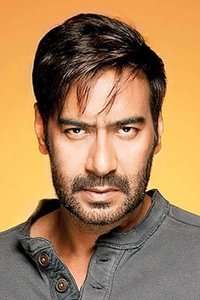





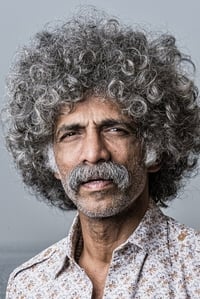



The phenomenal success of RRR is significantly attributed to its powerhouse cast, led by the charismatic performances of N. T. Rama Rao Jr. as Komaram Bheem and Ram Charan as Alluri Sitarama Raju. Both actors deliver career-defining performances, embodying their respective characters with immense passion, raw energy, and compelling emotional depth. NTR Jr. perfectly captures Bheem’s innocence, brute strength, and unwavering loyalty, while Ram Charan brings layers of intensity, conflicted loyalty, and heroic resolve to Raju. Their on-screen chemistry is electrifying, particularly evident in the iconic “Naatu Naatu” dance sequence, which highlights their synchronization and vibrant energy.
The film also benefits from a strong supporting ensemble. Ajay Devgn delivers a powerful extended cameo as Raju’s father, injecting gravitas and purpose into the narrative. Alia Bhatt, in her Telugu debut, shines in her brief yet pivotal role as Sita, Raju’s fiancée. Olivia Morris as Jenny and Alison Doody as Catherine Buxton, along with Ray Stevenson as Governor Scott Buxton, effectively portray their respective roles, adding significant weight to the film’s dramatic conflicts. S. S. Rajamouli’s adept direction ensures that every actor, regardless of their screen time, contributes meaningfully to the grandeur and emotional core of this epic tale.
Critical & Audience Response
RRR was met with nearly universal critical acclaim and an overwhelmingly enthusiastic audience response worldwide, solidifying its status as a global phenomenon. Critics lauded the film for its audacious vision, breathtaking action sequences, and stellar performances, particularly from N. T. Rama Rao Jr. and Ram Charan. Many praised S. S. Rajamouli’s masterful direction, his ability to craft a compelling narrative around larger-than-life characters, and his uncompromising commitment to cinematic spectacle. The film’s technical brilliance, including its stunning cinematography, powerful background score, and groundbreaking visual effects, was frequently highlighted as contributing to its immersive experience.
Audiences, both in India and internationally, embraced RRR with fervor, leading to massive box office success and numerous accolades. The “Naatu Naatu” song became a cultural sensation, winning an Academy Award for Best Original Song. While some minor criticisms were leveled at its historical inaccuracies (given its fictional nature) or its occasional reliance on cinematic exaggeration, these were largely overshadowed by the sheer entertainment value and emotional resonance of the film. RRR was celebrated for reminding audiences of the magic and grandeur of big-screen storytelling, making it a landmark in Indian cinema’s global outreach.
Direction & Cinematography
S. S. Rajamouli’s direction in RRR is nothing short of visionary. Known for his ability to merge grand spectacle with emotional storytelling, Rajamouli orchestrates every frame with meticulous detail, ensuring that the film’s epic scale never overshadows its human core. His direction is characterized by an unflinching commitment to crafting memorable character introductions, exhilarating action set pieces, and powerful dramatic moments that resonate deeply with the audience. He masterfully balances the two parallel narratives of Bheem and Raju, building their individual strengths before unleashing their combined force.
K. K. Senthil Kumar’s cinematography is a defining element of RRR’s visual splendor. His camera work is dynamic and ambitious, perfectly capturing the expansive landscapes, the gritty realism of the period, and the stylized intensity of the action. From the sweeping wide shots that establish scale to the intimate close-ups that convey raw emotion, Senthil Kumar’s lens is always precise. His use of vibrant colors, dramatic lighting, and fluid camera movements enhances the film’s larger-than-life feel, making every frame a visual feast. The collaboration between Rajamouli and Senthil Kumar results in a truly immersive and visually stunning cinematic experience that elevates RRR beyond a mere action film.
Music & Background Score
The musical genius of M. M. Keeravani is undeniably one of the cornerstones of RRR’s success. His compositions, both songs and background score, are deeply woven into the film’s narrative fabric, elevating every emotional beat and action sequence. The iconic “Naatu Naatu,” which earned an Academy Award, is a testament to his ability to create infectious, high-energy tracks that instantly become global sensations. Beyond the hit songs, Keeravani’s background score is a masterclass in enhancing cinematic impact. It seamlessly transitions from adrenaline-pumping anthems during the colossal action scenes to poignant, soul-stirring melodies that underscore the characters’ emotional journeys and the film’s patriotic themes. His music doesn’t just accompany the visuals; it lives and breathes with the story, amplifying every roar, every tear, and every triumph, making RRR an auditory masterpiece.
Visuals & Special Effects
RRR pushes the boundaries of visual storytelling in Indian cinema with its breathtaking and often audacious special effects. The film’s visual effects supervisor, V. Srinivas Mohan, along with various VFX studios, crafts a world that is both grand and believable, despite the inherent hyper-realism of the action sequences. From the astonishing animal stampede sequence at the beginning to the detailed recreation of 1920s British India, the VFX work is seamlessly integrated. The film employs a sophisticated blend of practical effects and CGI, ensuring that even the most gravity-defying stunts feel impactful and immersive. The sheer scale of the set pieces, the intricate details in the environments, and the dynamic rendering of explosions and battle scenes all contribute to RRR’s visual splendor. These elements are not merely decorative; they are integral to Rajamouli’s vision, allowing for cinematic spectacles that would otherwise be impossible, making RRR a true visual feast.
Editing & Screenplay
The editing of RRR by A. Sreekar Prasad is crucial in maintaining the film’s relentless pace and epic three-hour-plus runtime. Despite its length, the film rarely feels dragged, a testament to the sharp and impactful cuts that keep the narrative momentum high. Prasad’s editing skillfully navigates between the parallel storylines of Bheem and Raju, building anticipation for their eventual convergence. The action sequences, in particular, benefit from dynamic and precise editing that enhances their intensity and clarity.
The screenplay, primarily penned by S. S. Rajamouli from a story by V. Vijayendra Prasad, is a masterclass in crafting a blockbuster narrative. It skillfully intertwines historical context with a fictionalized bromance, creating compelling character arcs for both protagonists. The dialogue, written by Sai Madhav Burra, is impactful and memorable, often adding a layer of heroism and patriotism. While some moments embrace cinematic liberties and exaggerated heroism, the screenplay’s strength lies in its emotional core, its ability to evoke strong sentiments, and its unwavering commitment to delivering pure entertainment. It ensures that even with its grand scale, the film remains rooted in relatable themes of friendship, struggle, and freedom.
Positives / What Works
RRR shines brightest with its electrifying performances by N. T. Rama Rao Jr. and Ram Charan, whose chemistry is simply unparalleled. The film’s colossal action sequences are groundbreaking and push cinematic boundaries, delivering pure adrenaline. S. S. Rajamouli’s visionary direction brilliantly combines epic scale with emotional depth. M. M. Keeravani’s powerful soundtrack and background score are integral to the film’s impact, with “Naatu Naatu” being a global sensation. The stunning cinematography and seamless visual effects create an immersive and breathtaking world. RRR’s ability to provide immense entertainment while carrying a strong emotional core is truly commendable.
Negatives / What Doesn’t Work
While overwhelmingly positive, RRR does have a few minor aspects that could be seen as less impactful. Some critics pointed out its **historical inaccuracies**, though the film openly presents itself as a fictional narrative. The **exaggerated action sequences** might be too over-the-top for viewers unaccustomed to the style of Indian cinema, occasionally testing the limits of suspension of disbelief. Additionally, while Alia Bhatt’s performance is good, her **character’s screen time is relatively limited**, making her impact slightly less than what audiences might have hoped for from such a prominent actress. These are minor quibbles in an otherwise spectacular cinematic achievement.
Final Verdict / Conclusion
RRR is a cinematic triumph that lives up to its immense hype. It is a no-holds-barred action spectacle, a deeply emotional story of brotherhood and rebellion, and a testament to the power of grand-scale filmmaking. Rajamouli, along with his stellar cast and crew, delivers an unforgettable experience that is rich in spectacle, emotion, and unadulterated entertainment. Despite its considerable runtime and occasional cinematic liberties, the film’s relentless energy, powerful performances, and technical brilliance make it an absolute must-watch. RRR is not just a film; it’s a global phenomenon that reminds us why we love going to the movies. Prepare to be thrilled, moved, and utterly enthralled.
Movie Rating
| Rating Category | Score (Out of 5 Stars) |
| Plot & Storyline | ⭐⭐⭐⭐ |
| Acting & Performances | ⭐⭐⭐⭐⭐ |
| Direction & Cinematography | ⭐⭐⭐⭐⭐ |
| Music & Background Score | ⭐⭐⭐⭐⭐ |
| Overall Entertainment Value | ⭐⭐⭐⭐⭐ |
| Average Score | 4.8 / 5 |

OFFICIAL TRAILER
FAQs
Did Pushpa 2 beat RRR?
The film won an Oscar for Best Song (Naatu Naatu), shattered records, and reached historic heights at the global box office during its theatrical run. As per reports, RRR achieved a lifetime Indian box office collection of Rs 782.2 crore—a staggering figure for most films.
Why is RRR so famous?
Oscar-winning music composer A. R. Rahman calls it a “paradigm shift.” It is the first Indian song to win this honor. The song is also on the shortlist for the Oscars. It won best song at the Critics' Choice Awards as well, and the film won best foreign language film.



